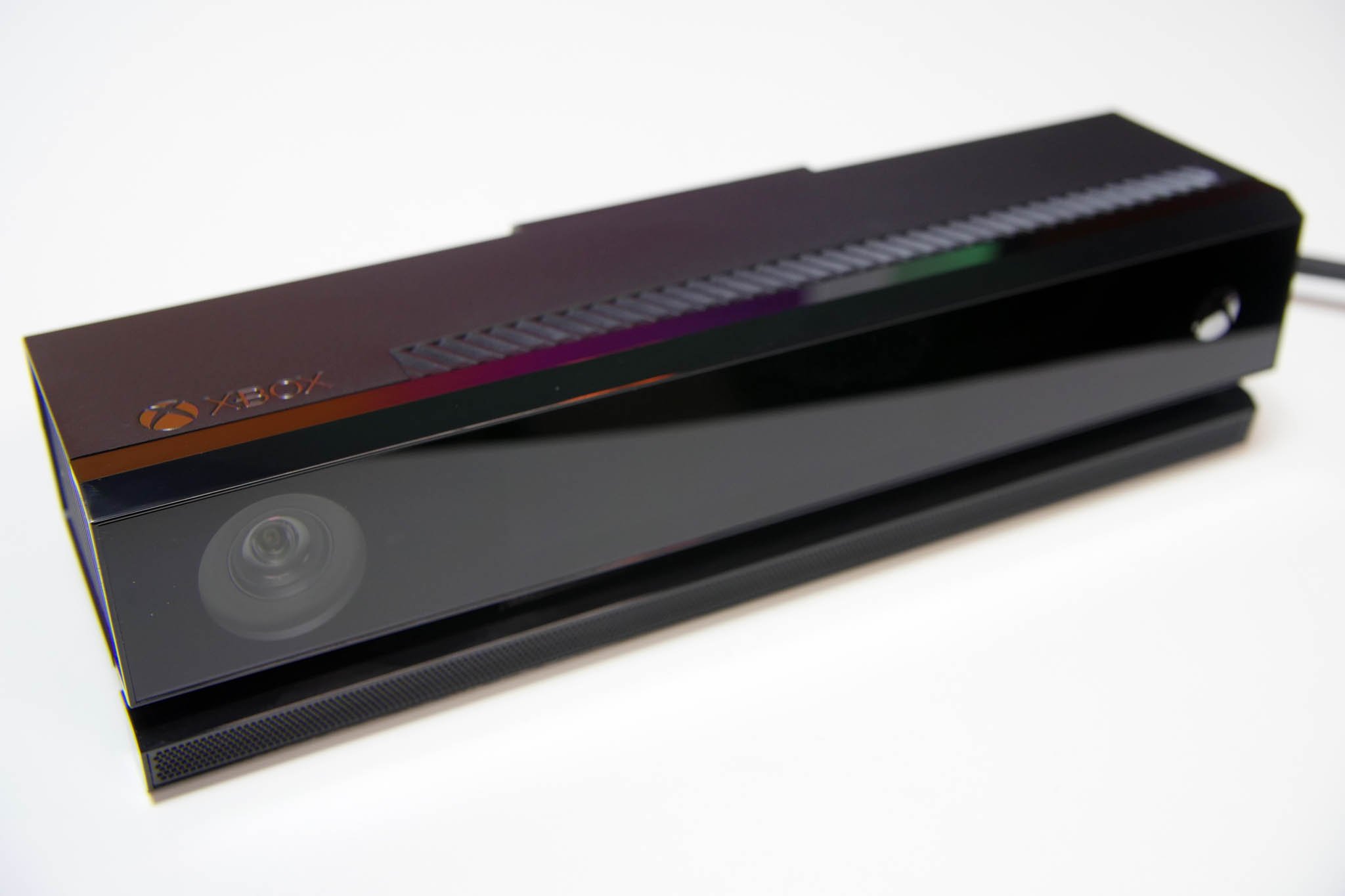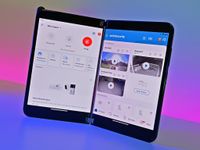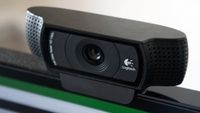History of the Xbox 360 & Xbox One Kinect: Gone but Not Forgotten

Kinect, while fun in brusque bursts, never really accomplished the success of the motion-controlled Nintendo Wii that Microsoft had hoped to capitalize on. Though for a short a time it was the fastest selling electronic consumer device in history.
Kinect incorporated an array of cameras that could detect depth, motility, and diverse other nuanced data that developers could then leverage to create experiences. The second Kinect camera, armed with infra-cherry-red, was powerful enough to detect pigment fluctuations in the skin to the level of beingness able to accurately estimate your centre charge per unit. Applications similar Xbox Fettle combined this data to create unique exercising experiences, while game developers built all sorts of wacky and wonderful experiences, including the raunchy and violent shooter Blueish Estate, and the yoga photo platformer Commander Cherry.
Kinect certainly had its fans (including myself), only a series of missteps at Microsoft, combined with a full general lack of compelling experiences essentially doomed the accessory. With production of both the photographic camera and the adapter finished, Kinect will now join Microsoft Band, Groove Music, and Windows Phone on a growing scrapheap of consumer products Microsoft failed to position properly.
This is a farewell to Kinect, gone but not forgotten (even by Microsoft).
Kinect in history
Projection Milo, 2009.
After Kinect'south E3 2009 reveal, under lawmaking proper name "Project Natal," Microsoft garnered an equal corporeality of anaesthesia and ridicule as a result of its now-infamous demo "Milo & Kate," which, while billed every bit a alive demo, turned out to be conceptual at the very all-time. Kinect sadly never lived up to the promises fabricated past that almost-10-yr-former demo, which arguably contributed to its demise.
Ex-Lionhead Studios lead Peter Molyneux claimed that Project Milo would recognize the emotional tone in people's voices and faces, and reply realistically in real time. The demo (among other things) would earn Molyneux a reputation for over-promising and under-delivering. I only had a casual involvement in Xbox at the fourth dimension (due in large part to a massive Globe of Warcraft addiction), but even however, news most Milo filtered beyond the hardcore crowd and into the mainstream, attributable to its sci-fi like promises of full, virtual, interactive bogus intelligences.
 Kinect V1.
Kinect V1.
Almost ten years later on, Microsoft (or whatever other company for that thing) hasn't realized this futuristic vision, but Kinect went on to become the fastest selling accessory of all time. And probably, the fastest selling paperweight of all time, as a lack of apps and games, in addition to poor recognition and weak processing, prevented the camera array from achieving consistent adoption.
Microsoft went to surprisngly lengths to market the get-go Kinect despite its foibles, enlisting Oprah Winfrey, Jimmy Fallon, and diverse other celebrities to promote the tech to coincidental audiences in an effort to capture the delinquent success of the Nintendo Wii, which had its own motion-tracking controllers. Microsoft besides reportedly hosted a star-studded L.A. party to launch the device, reportedly attended by a-listers like David Beckham.

Reviews of the device were generally positive, with Kotaku calling information technology "magical." Indeed, many comparisons were drawn betwixt Kinect and the sci-fi movie Minority Report, which has move-controlled reckoner interfaces. I accept to say, when I used Microsoft's upgraded Kinect V2 with the Xbox 1 for the beginning time, I completely felt the same way.
Microsoft released a second version of Kinect to ship with the Xbox Ane in 2022, although its inclusion was mired in controversy.
Indeed, Microsoft released a 2nd version of Kinect to send with the Xbox One in 2022, although its inclusion was mired in controversy. Hardcore gamers never wanted the affair, but at present they were forced to purchase it with the Xbox 1, which inflated its price bespeak $100 higher up that of the PS4. Microsoft's try to drive adoption, and thus get more than developers on board, was a adventure that ultimately didn't pay off. Arguably, the mis-step contributed to Xbox's position far, far behind that of the PlayStation 4. Xbox has been playing catch upward ever since.
Information technology'south a shame how it all played out, considering for me, Kinect coupled with voice command was a cardinal differentiator between the Xbox Ane and other consoles, and something I felt was fundamental to Microsoft'due south full general living room computing strategy.
"Futuristic"
When I finally kicked the Warcraft addiction and jumped dorsum on the Xbox railroad train, I found myself thoroughly enraptured past Kinect V2 on the Xbox I. Far across its clunky Projection Milo roots and Wii Sports clones, Kinect V2 allowed me to yell vocalism commands at my Television, leveraging the console's IR equalizer to turn the Idiot box off and on, control volume, and fifty-fifty change channel. And my friends, it all just worked.
 Kinect V2.
Kinect V2.
"Xbox, sentinel BBC News." "Xbox, volume up five." "Xbox, record that." It was all just then magical, intuitive, and frankly liberating to finally ditch the remote control, and celebrate Xbox every bit the middle of my entertainment system. Getting home from a long day at piece of work and speaking those words, "Xbox on," was like a magical incantation – it actually defined the start of my experience with this console generation.
Getting habitation from a long day at work and speaking those words, "Xbox on," was like a magical incantation.
Developers had too picked up Kinect, edifice a wide array of homebrew solutions and non-gaming applications, in both medicine and sign language translation, and more.
Combined with the Universal Windows Platform (UWP) which arrived on Xbox a little later on, it was easy to envision a world where developers could incorporate Kinect into entire smart home systems. Some of them did, too, creating third-party apps for smart bulbs and other home automotive devices. "Xbox, turn on the lights." "Xbox, who'southward at the front door?" etc. I previously wrote near how Kinect could have been Microsoft'due south Amazon Echo. All of the pieces were in place, Microsoft just never fabricated the play.

With UWP app development adoption seemingly weaker than always, and Kinect out of the window, Microsoft has substantially conceded the domicile automation market place to the likes of Alexa and Google Home, needlessly, and frustratingly. At least for the time being.
Microsoft bought Cortana to the Xbox One a little while ago as an option to replace the existing voice control structure. The two-organisation solution has been zip short of disastrous all the same, creating a confusing scenario for consumers. Cortana on Xbox 1 was also slow, unresponsive, and merely plain clunky compared to her native counterpart. While Cortana on Xbox bought features like her Notebook, reminders, and more, those media controls were harder to employ than ever, and became less convenient than simply using a controller. I've been told that Microsoft still has plans to shore upwardly Cortana and voice commands on Xbox One by diverse sources, pending new technology, but whether those plans are still in play are unknown. If they are, hopefully nosotros'll see something in 2022.
In any case, with Kinect production close down, and the Xbox One S and X adapter along with it, Microsoft is waving farewell to the peripheral, but not the engineering.
Moving forward
The engineering and research that powered Kinect lives on in Windows Mixed Reality, which in some ways, can be considered Kinect V3. Windows Mixed Reality's camera-laden head mounted displays (HMDs) perceive the globe in a similar style to Kinect, sensing depth and using it to inform developers and thus, create experiences. HoloLens is even powerful enough to track specific mitt gestures, just like Kinect, and the Windows Mixed Reality motion controllers are far more than accurate and responsive than camera tech can account for at this time.

Mixed Reality certainly has its downsides likewise, though. Unlike Kinect, you're currently tethered to a PC and a headset to use the system, and "native" Microsoft Store back up from games is limited. SteamVR is doing a lot of the heavy lifting correct now, but without proper WMR support via UWP (both for games and apps), information technology still feels a little clunky.
That said, WMR already feels far more promising than Kinect ever did, at least every bit a games device. The accuracy of the motion controllers, the immersion afforded by the headset, and the within-out camera tracking is supremely encouraging, even if the organisation over all has some growing pains to overcome.

Where does that leave Xbox though? Nosotros notwithstanding don't know when (or indeed, if) immersive WMR will ever come to the console, but even then, information technology's a solution primarily aimed at gaming and some fringe productivity scenarios. Home automation, smart speakers, and Telly controls have returned to a pre-Xbox One age, bound to remotes and dreams of techies and sci-fi fantasists.
Goodbye Kinect
That "Minority Study"-inspired sci-fi magic that the Kinect V2 seemed to promise has burned out. Xbox is simply a games console once again with a few media apps, rather than a frontwards-facing futuristic all-encompassing media hub that could take (and should take) been the center of your entire home's technological set up-up.
There are unproblematic ways Microsoft could reintroduce itself in this market, by adding a microphone to the Xbox media remote for example, and improving Cortana'south skill set (which the company is doing), but information technology doesn't feel like anyone at Xbox is pushing for that sort of scenario any more.

For gamers, the resource Microsoft leveraged at Kinect will likely exist repurposed and refocused towards games and gaming, which is by no means a bad thing, but if that truly is the case, it's non without a sense of sadness that I ask, "why couldn't we accept both?"
Since I didn't pick up a Kinect adapter fast enough for my Xbox One 10… I guess I have to say goodbye to Kinect also. I dubiousness killing off Kinect will impact Xbox in any negative way in the long run (I mean, if people were using it, they'd have kept it). At the very least, this ane random tech blogger will forever miss proverb that magical phrase "Xbox on". Similar many Microsoft product deaths recently, I'grand certain many of us will continue to wonder what could have been, while questioning the long term future of other new and upcoming hardware products from Microsoft.
We may earn a commission for purchases using our links. Learn more.

Episode x
Ask Windows Central: Will there be a Surface Duo 3?
Welcome to the 10th episode of Ask Windows Central, a evidence where we respond our customs's near asked questions effectually Microsoft, Windows, Surface, Xbox, and the general tech industry. In today's episode, we reply questions about Windows eleven, Surface Duo, Your Phone, and more!

It's here
The AT&T version of Surface Duo is at present getting Android xi
Afterward a very long await, the original Surface Duo is now eligible to receive its over-the-air OS update to Android 11. Here is what is new and fixed with the biggest update yet for Microsoft's first dual-screen Android device.

Quick and easy video
Our superlative picks for the all-time Xbox One webcams
Whether you lot're jumping into a Skype video telephone call or dissemination to thousands across the globe, these are our top picks for Xbox 1 webcams. Nearly every USB webcam works, but some are much better than others.
Source: https://www.windowscentral.com/ode-kinect
Posted by: barrientosproself.blogspot.com


0 Response to "History of the Xbox 360 & Xbox One Kinect: Gone but Not Forgotten"
Post a Comment